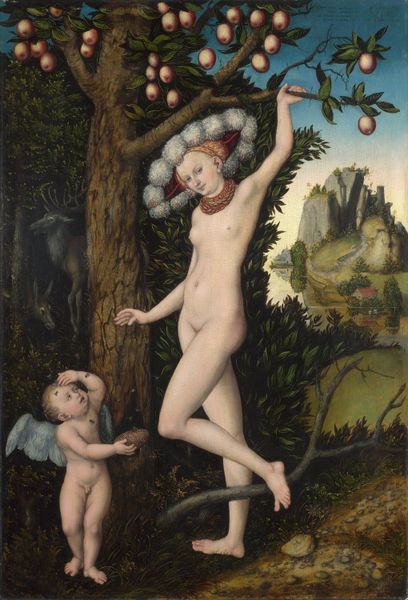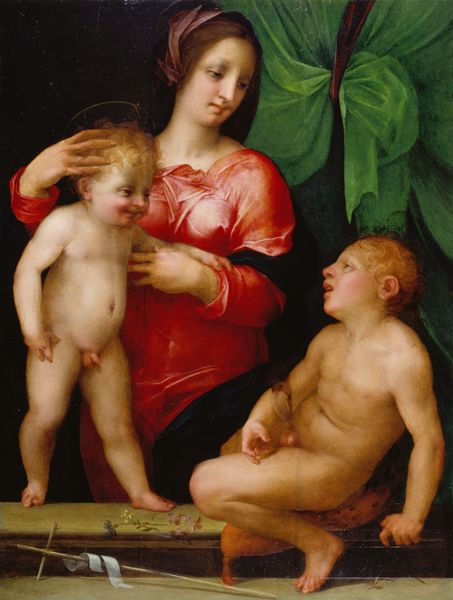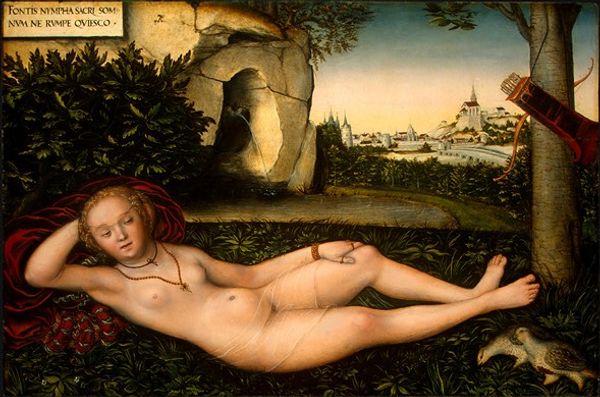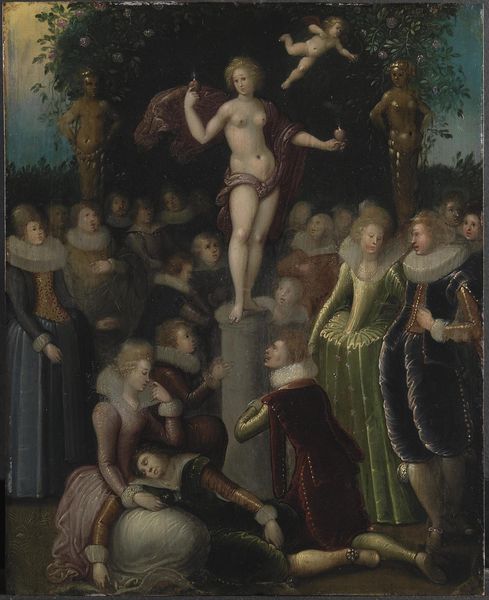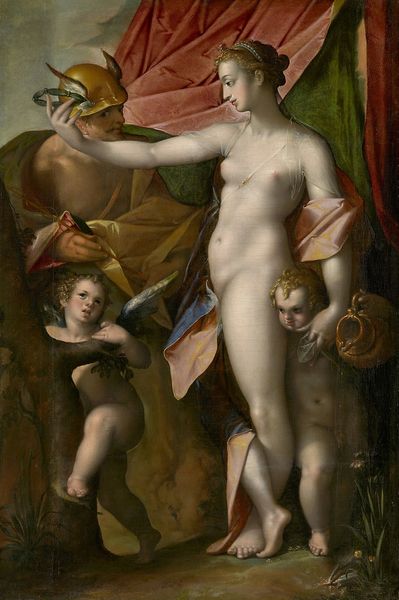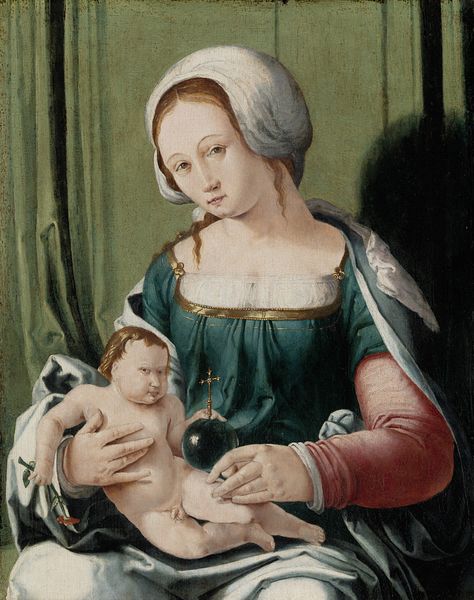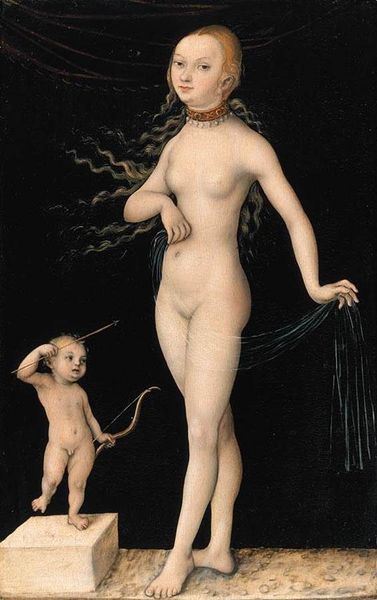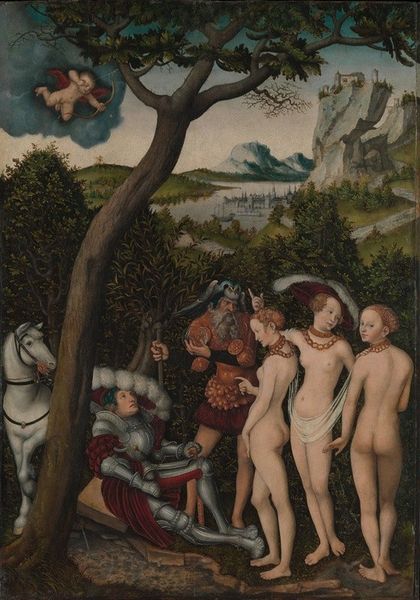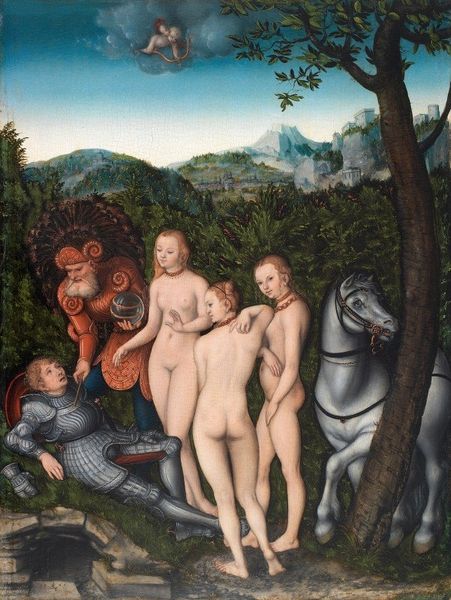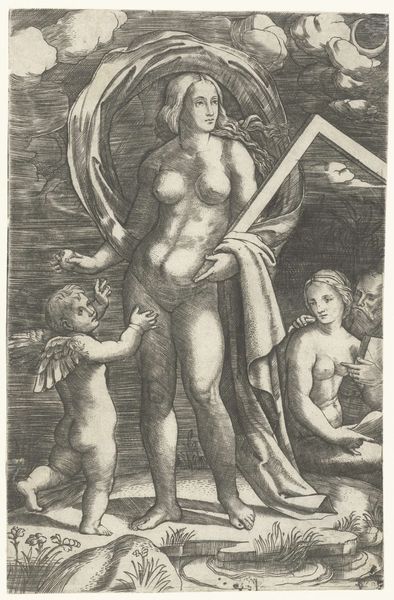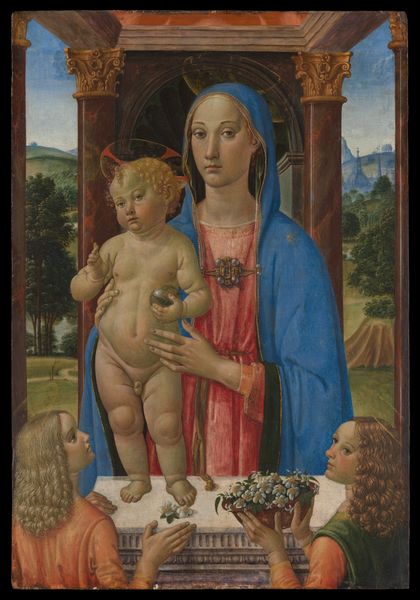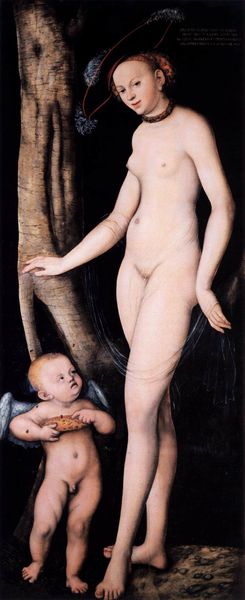
painting, oil-paint
#
portrait
#
high-renaissance
#
allegory
#
painting
#
oil-paint
#
mannerism
#
oil painting
#
nude
Dimensions: 14 5/16 x 9 15/16 in. (36.3 x 25.2 cm)
Copyright: Public Domain
Editor: This is "Venus with Cupid the Honey Thief," likely painted between 1575 and 1625, in the style of Lucas Cranach the Elder. It's oil on panel and currently resides at the Met. I’m immediately struck by the contrasting textures – the smoothness of Venus’ skin versus the almost prickly nature of Cupid’s bees. How do you approach a work like this? Curator: Well, from a materialist perspective, I’m interested in the labour that goes into creating these contrasting textures, the sourcing of pigments, the grinding, the application – where did Cranach source his materials and how did this impact on the workshops economic activities? We should think also about how high art versus low art distinctions arise and get maintained. Here the oil-paint enables meticulous work and highly valued work. The high art, allegory versus humble, artisanal processes and resources. How would you approach interpreting the poem written in the top left of the piece? Editor: The poem alludes to the pain mixed with pleasure… Curator: Right, and consider how those feelings were experienced by different groups involved with producing and purchasing work: was painting profitable or was it a constant struggle to produce work that pleases a buying public? Did painters experience pleasure with the work? It speaks about Cupid's suffering as analogous to human suffering arising from pursuit of love or beauty. This analogy between human feeling and artistic production would speak for what? Editor: Possibly that artistry reflects our inherent contradictions. What are those bees doing? Curator: Notice those aren’t simply “bees”. They become a raw material used for conveying meaning but more practically speaking, what dyes are produced from insects like bees that were applied to pigment manufacturing processes during this era? It gets us asking about extraction processes and supply chain realities for artists at the time. Editor: It’s so interesting to think of these allegorical elements alongside tangible labor involved. It pushes beyond art as some untouchable, purely aesthetic domain. I’ll think more about that as I analyze other pieces in our collection. Curator: Precisely! Remember, all art involves resources and processes to be brought into material being – there lies potential power in focusing on the ‘how’ of artmaking.
Comments
No comments
Be the first to comment and join the conversation on the ultimate creative platform.
